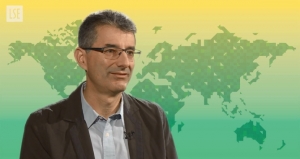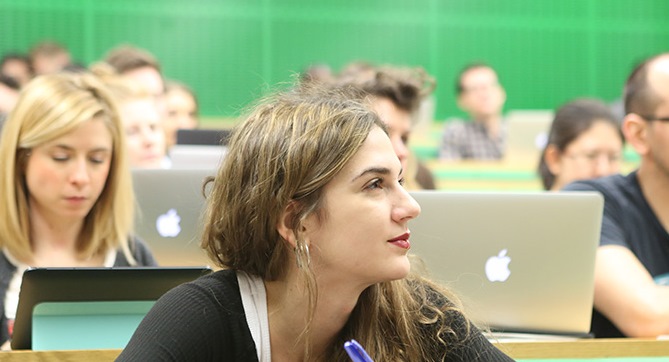Professor Faguet explains why political economy research on Latin America is on the verge of a major breakthrough, based on deep collaborations between historians, political scientists, economists and scientists further afield, exploring the drivers of divergent development patterns over not decades, but centuries and even millennia.
Why are some countries rich and others poor? Why did some countries, like the UK and France, achieve high levels of economic and human development over a century or more, whereas others, like South Korea and Singapore, did so in little more than a generation? Why does a third set of countries (Ghana, Costa Rica) seem stuck at intermediate levels of development, while in others (Mali, Honduras) development never really got going, or – more dramatically – surged forward for a time and then collapsed (Argentina, Venezuela)?
Big questions like these were out of fashion in the 1980s and 1990s, but they have come storming back to centre stage in the new millennium. Seminal works like Acemoglu and Robinson’s Why Nations Fail (2012) and Engerman and Sokoloff’s “Factor endowments, inequality, and paths of development among New World economies” (2002) brought a powerful resurgence of research into the roles of institutions, factor endowments, and human capital in driving economic growth and inequality across the world.
These ideas have been advanced forcefully and tested in a variety of contexts. Many of these theories are eye-catchingly bold, proposing for instance that colonial mortality rates in, say, North America vs Africa caused some colonies to develop ‘inclusive institutions’ guaranteeing equal rights and a voice for all (Massachusetts), while others developed ‘extractive institutions’ that facilitated rapid wealth extraction by Europeans through the oppression of native and slave populations. But these studies have also been challenged as lacking in empirical nuance, and – more damningly – operating at too high a level of aggregation to distinguish between key dimensions of the package of ‘institutions’ they seek to study. The cross-country studies on which most of this literature is based – typically involving over 100 countries across six continents – imply a geographic reach that is heroic.
And yet the literature these studies spawned remains provocative and rich. In large part, this is because more micro-level studies with creative identification strategies, working with more disaggregated dependent and independent variables, have emerged to shed new light on the central debates. In our view, some of the most methodologically robust approaches involve subnational analysis exploiting subnational variation. Latin America offers an ideal context in which to develop such research, with huge variation across space and time in economic and human development outcomes, and also subnational institutions, human capital, public investment, factors and resources, and other political and geographic variables. And in contrast to other developing regions, Latin America offers comparatively high-quality data, often available across very long periods of time.
New research by young scholars has taken up the challenge with impressive preliminary results suggesting a clear potential to remake the political economy of development. A couple of examples can help illustrate some of the nuanced insights to be gained by going deep (subnational) and long (time scale).
First, by studying land reform and inequality in Colombia over two centuries we can see how a quantity of land equivalent to the entire United Kingdom was transferred mainly to landless peasants, even if Colombia still maintained one of the highest concentrations of land ownership in the world. Thanks to a fabulous database chronicling every individual plot granted by the government since 1901, we can examine how land reform, which waxed and waned over the decades, affected patterns of landholding, inequality, poverty levels, and human development – all at the local level – with a wealth of municipal data that we have spent twenty years compiling.
This analysis reveals that land reform in Colombia did not have an effect on land tenure, inequality, or development, but rather many effects, varying as much as municipalities differ from one another in their key underlying characteristics. Which is to say, a lot. The main pattern of effects we find is bimodal: most of Colombia’s 1100+ municipalities lack a landed elite. In these, rural properties grew larger, land inequality and dispersion fell, and development indicators improved. But in municipalities where such an elite does exist, meaning landholding is highly concentrated in the hands of large landowners, such positive effects are counteracted. Here, land reform led to smaller rural properties, greater landholding dispersion, and lower levels of development. We show that all of these effects – positive and negative – flow through local policy, which in one-third of the country elites managed to distort to benefit themselves. In terms of explaining development and the distribution of land, our evidence implies that land reform’s second-order effects, on the distribution of local power, are more important than its first-order effects, on the distribution of land. What is most striking is that the main impact of a sustained land-distribution efforts was not on the distribution of land, but rather on who does and does not have local power.
![]()
A Colombian farmer sowing crops in Huila (Elias Falla, CC0)
Another paper featured at the upcoming LSE-Stanford conference, “Is Extraction Bad? Encomienda and Development in Colombia Since 1560”, examines the effects of a forced-labour institution, the encomienda, which the Spanish imposed on colonial society from the 1500’s through to independence in 1821. Theencomienda obliged “indians” (indigenous people) to pay yearly tribute to their Spanish lords in money, labour, and kind, in exchange for protection and instruction in the Catholic faith. Encomiendas were imposed by the Crown in some areas of Colombia but not others; some were relatively brief whereas others lasted for centuries. We exploit this variation to explore the effects of encomienda on economic output, poverty, human capital, inequality, and state capacity between 1560 and today. Doing so presents numerous statistical challenges, to put it mildly. We try to overcome these with what is called a neighbour-pair fixed effects (NP-FE) strategy, which focuses the analysis on neighbouring pairs of similar municipalities, some with and others without encomienda.
Despite the obviously extractive nature of the encomienda, we find that municipalities that had it have higher levels of municipal GDP and GDP/capita, lower levels of poverty and infant mortality, higher secondary school enrolment, and higher indicators of state presence today, 450 years later, compared to otherwise similar municipalities that lacked encomiendas. How might such an effect have come about? We probe further, using data on intermediate-term outcomes from 1794, 1853, 1912 and 1918. This indicates thatencomienda is strongly and positively associated with both state capacity and population. Places where theencomienda was imposed in 1560 have higher state capacity and larger populations at each of these intermediate dates. Which of these two causal channels dominates? Performing a ‘horse race’ of local state capacity vs population (implying economies of scale and aggregation) reveals that the causality between encomienda and improved present-day economic and development outcomes appears to run through the strengthened local presence of a more capable state.
In both examples, our findings show the benefits of exploiting the finer grain of subnational variation to explore the subtleties of institutions’ effects on development. They also highlight the importance of disaggregating our understanding of “institutions” into conceptually distinct elements, and then investigating each one carefully and in isolation. Land grants to landless peasants are doubtlessly a good idea. But the local political economy “soil” in which the seeds of reform take root can produce vastly different effects, going so far as to decrease medium and small farm sizes, thereby undermining development. Likewise, that the Spanish encomienda was an extractive institution, and objectionably so, is beyond doubt. But our evidence implies that it played an important role in building the state in Colombia, and a stronger local state in turn spurred development. Areas that did not suffer the encomienda are worse off today, a finding that complicates our understanding of institutions and challenges the meaning of “extraction”.
The time is ripe to bring together research that simultaneously produces major substantive findings and serves as a proof-of-concept for new empirical approaches. The LSE-Stanford-Uniandes Conference Seriesseeks to do precisely this, advancing an exciting intellectual agenda that promises to open new windows of understanding on why some societies are rich, free, and abounding with opportunity, while others are not.
This week, Jean-Paul Faguet and Alberto Diaz-Cayeros will co-host a conference on Long Range Development in Latin America at Stanford University, inaugurating a yearly series of high-level conferences co-hosted by the LSE, Stanford, and the Universidad de los Andes (Colombia). The research presented will feature new empirical approaches, exploiting novel datasets, subnational variation, and mixed methods in ways that promise to shed light on some of the most complex social issues of our time.
Jean-Paul Faguet is Professor of the Political Economy of Development at the London School of Economics. He is also Chair of the Decentralization Task Force at Columbia University’s Initiative for Policy Dialogue. His research blends quantitative and qualitative methods to investigate the institutions and organisational forms that underpin effective governance and rapid development. He has published extensively in political science, economics, and development literatures, including Is Decentralization Good for Development? Perspectives from Academics and Policymakers (Oxford University Press, 2015), and Governance from Below: Decentralization and Popular Democracy in Bolivia (U of Michigan Press), winner of the W.J.M. Mackenzie Prize for best political science book of 2012.
This article was first posted on the LSE Latin America and Caribbean blog.
The views expressed in this post are those of the author and in no way reflect those of the International Development LSE blog or the London School of Economics and Political Science.














 Every year my
Every year my 




 I think that a strong case can be made for pre-circulating lecture notes, and have done so whenever I have completed them in time to do so. I am aware that some colleagues feel that this is spoon-feeding students, and reducing the effort they need to make to follow the lecture, but I think that this underestimates the difficulties involved in assimilating the amount of new information incorporated in a complex two-hour lecture in a new field. This is particularly difficult in an inter-disciplinary programme like Development Studies, where few of the students will have any grounding in the basic theoretical assumptions that underpin the diverse topics they are obliged to address.
I think that a strong case can be made for pre-circulating lecture notes, and have done so whenever I have completed them in time to do so. I am aware that some colleagues feel that this is spoon-feeding students, and reducing the effort they need to make to follow the lecture, but I think that this underestimates the difficulties involved in assimilating the amount of new information incorporated in a complex two-hour lecture in a new field. This is particularly difficult in an inter-disciplinary programme like Development Studies, where few of the students will have any grounding in the basic theoretical assumptions that underpin the diverse topics they are obliged to address.


 Is decentralization good for development? It’s always good to begin by defining key terms. Let’s define ‘development’ as increasing human well-being and freedom. What exactly do we mean by ‘decentralization’?
Is decentralization good for development? It’s always good to begin by defining key terms. Let’s define ‘development’ as increasing human well-being and freedom. What exactly do we mean by ‘decentralization’?
 Another key advantage is the greater, more detailed information that decentralized government should be able to bring to bear on any public problem, no matter how small. To better understand this, consider the types of information required to solve any public problem, or provide any high-quality public service. One kind, of course, is technical expertise. Planning a vaccination campaign, designing an irrigation system, and building a water treatment plant are nontrivially complex problems. I could not do any of these things competently myself, and my guess, dear reader, is neither could you. They require specialized knowledge that relatively few people have. Such people tend to cluster in cities, not towns or villages. They tend to work for central government, where the pay is better and the challenges more interesting. Accordingly, central government has an important advantage in the different sorts of technical expertise required for effective service provision.
Another key advantage is the greater, more detailed information that decentralized government should be able to bring to bear on any public problem, no matter how small. To better understand this, consider the types of information required to solve any public problem, or provide any high-quality public service. One kind, of course, is technical expertise. Planning a vaccination campaign, designing an irrigation system, and building a water treatment plant are nontrivially complex problems. I could not do any of these things competently myself, and my guess, dear reader, is neither could you. They require specialized knowledge that relatively few people have. Such people tend to cluster in cities, not towns or villages. They tend to work for central government, where the pay is better and the challenges more interesting. Accordingly, central government has an important advantage in the different sorts of technical expertise required for effective service provision.


 This week LSE academic developer Dr Colleen McKenna reported on The Great Lecture Notes Debate for the
This week LSE academic developer Dr Colleen McKenna reported on The Great Lecture Notes Debate for the 










